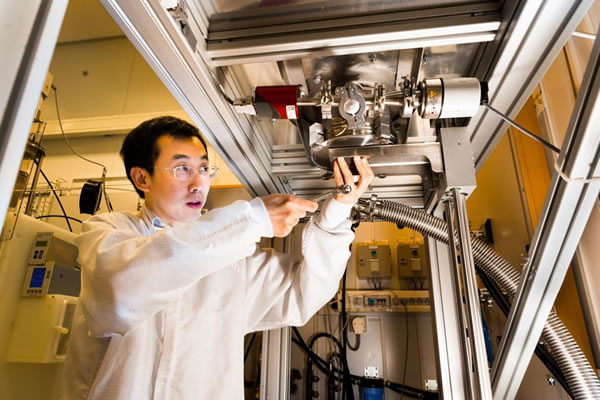According to foreign media reports, researchers at Linköping University in Sweden are trying to use solar energy to convert the greenhouse gas carbon dioxide into fuel. Recent research results also indicate that it is possible to produce methane, carbon monoxide or formic acid selectively with carbon dioxide and water using its technology.

(Source: Linköping University)
Plants will convert carbon dioxide and water into oxygen and high-energy sugar, as a "fuel" for growth, and obtain energy from sunlight. Jianwu Sun and colleagues at Linköping University are trying to simulate a reaction called "photosynthesis", which uses this reaction to capture carbon dioxide from the air and convert it into chemical fuels such as methane, ethanol and methanol. At present, this method is still in the research stage, and the scientists' long-term goal is to efficiently convert solar energy into fuel.
Jianwu Sun, Senior Lecturer, Department of Physics, Chemistry, and Biology, Linköping University: "With the help of solar energy, carbon dioxide is converted into fuel. This technology may promote the development of renewable energy and reduce the impact of burning fossil fuels on the climate. ."
Graphene is one of the thinnest materials in existence. It is composed of a single layer of carbon atoms. It is flexible, flexible, transparent to sunlight, and a good conductor. The combination of the above characteristics ensures the application potential of graphene in the fields of electronic equipment and biomedicine. But graphene itself is not suitable for the solar energy conversion applications sought by researchers at Linköping University, so they combined graphene with semiconductors and cubic silicon carbide (3C-SiC). In addition, scientists at Linköping University have developed a world-leading method for growing graphene on cubic silicon carbide composed of carbon and silicon. When the silicon carbide is heated, the silicon will be vaporized, and the carbon atoms will remain and be reconstructed in the form of a graphene layer. Researchers have previously shown that four graphene layers can be superimposed together in a controlled manner.
The researchers combined graphene and cubic silicon carbide to develop a graphene-based photoelectrode that can maintain the ability of cubic silicon carbide to capture sunlight energy and create charge carriers. While protecting silicon carbide, graphene also functions as a conductive transparent layer.
The performance of this graphene-based technology is controlled by several factors, one of which is the quality of the interface between graphene and semiconductor. Scientists have carefully studied the characteristics of the interface and indicated that the graphene layer on silicon carbide can be adjusted to control the performance of the graphene-based photoelectrode. It is more efficient to convert carbon dioxide in this way, while improving the stability of its components.
The photoelectrode developed by the researchers can be combined with cathodes made of various metals such as copper, zinc or bismuth. By choosing the appropriate metal cathode, carbon dioxide and water can selectively form different compounds, such as methane, carbon monoxide and formic acid. Jianwu Sun said: "The most important thing is that we have proved that solar energy can be used to control the conversion of carbon dioxide to methane, carbon monoxide or formic acid." In addition, methane can be used as a fuel for vehicles that use gas fuel. Carbon monoxide and formic acid can be further processed into fuel for industrial use. (Yu Qiuyun)
Cover Plate,Tunnel Manhole,Rectangle Cover Plate,Powder Concrete Cover
Jiangxi Long Zheng Techinical Developing (Pty) Ltd. , https://www.jxlongzhengkeji.com